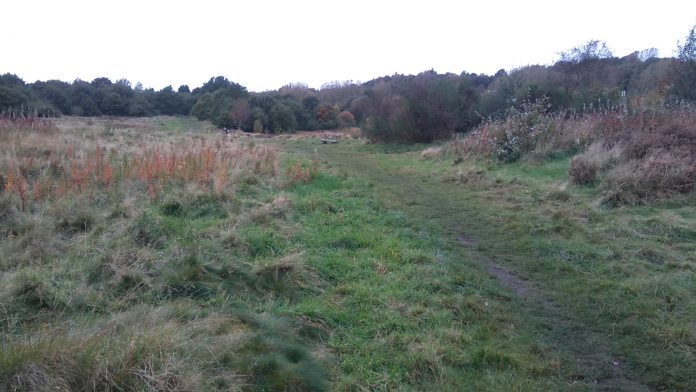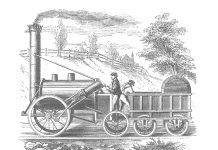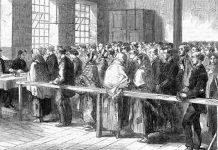England’s second oldest golf club will celebrate its 200th anniversary by playing the most unusual course in the country this Bank Holiday Monday.
The Old Manchester Golf Club was founded in 1818 by wealthy local gentlemen and played its first game on May 7 that year on Kersal Moor, Salford.
On May 7, 2018 the 40 strong club, which still does not have its own clubhouse or golf course, will return to Kersal Moor to play a private, invitation only game using specially designed holes and watch the Ceremonial Mayor of Salford unveil a commemorative plaque.
They will then celebrate in the traditional manner by sitting down to a meal.
John McKenna, chair of the club, said: “When Old Manchester was founded only the very rich could afford to play. They met every Friday, played golf on the moor on a course which is now partly lost beneath Salford FC’s Moor Lane stadium and then sat down to a lavish meal. They would import champagne from Paris for their meals which typically consisted of a couple of pheasants, three or four salmon and a gallon of port. They also welcomed guests who travelled up to 300 miles to play golf which was pretty impressive as travel was not easy in those days.
“On one occasion in 1858 Malcolm Ross was the only member who turned up. He played the course, ate all the food – “a large cod, a saddle of mutton, a goose, two brace of partridge and all the puddings a man could desire,” drank three bottles of port and then recorded the minutes of the meeting.”
Club members, who still celebrate the famous Dinner for One, continue to meet three times a year to play at other local courses and enjoy a meal together, though say their post game ‘feasts’ are nowhere near as lavish as those enjoyed by their founders.
The Ceremonial Mayor of Salford, Councillor Peter Connor said: “This is one of the more unusual plaque unveilings I’ve been asked to perform during my year of office. I’m delighted to see the club still going strong after 200 years and wish them all the best for the next 100 years.”
Kersal Moor, which is still an eight hectare moorland, has a long history of public gatherings. In 1790 highway robber and burglar James Macnamara was hanged on the moor as an example – though many of the spectators had their pockets picked at the occasion.
In June 1812, 30,000 troops from the Wiltshire, Buckinghamshire, Louth and Stirling regiments were camped there ready for action to suppress Luddites, textile workers who were smashing new weaving machines, fearing for their jobs.
Protest meetings were also held there by local coal miners campaigning for better pay because of the dangers they faced at work and by the Chartist movement, campaigning for political reform. In September 1838 between 30,000 and 300,000 people (according to two local newspapers) gathered on the moor to hear speakers from across the country and elect delegates for the Chartist national convention.







